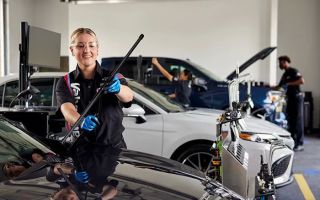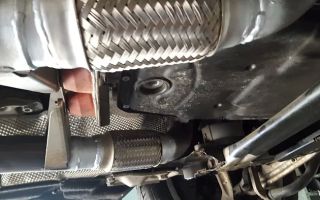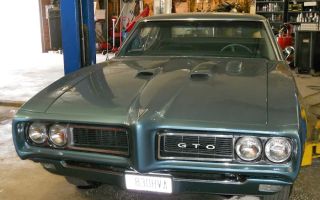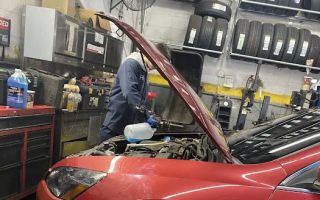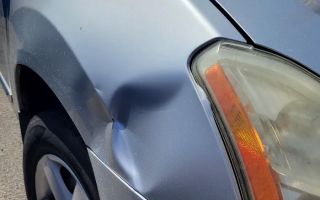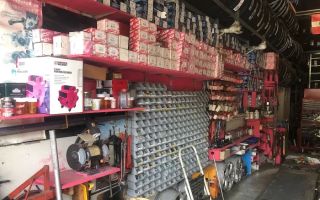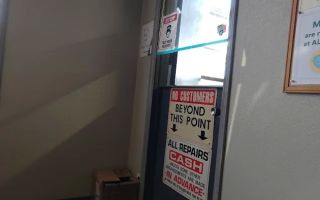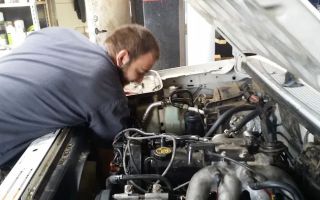How Do I Troubleshoot My Car After a Jumpstart?
If you’ve ever been in a situation where your car won’t start, you know how stressful it can be. You’re already running late or in a hurry, and then your car refuses to turn over. Thankfully, jumpstarting your car can be a quick fix. But what happens after you get your car started, and it still seems off? It can be frustrating not knowing whether the problem is resolved or if more action is needed. This is where knowing how to troubleshoot your car after a jumpstart can save you a lot of headaches and time. Here’s how you can quickly assess what’s going on and what steps you need to take to prevent a bigger problem down the road.

Pick Your Part - Help Yourself
1232 Blinn Ave, Wilmington, CA 90744, USA
1. Why My Car Wouldn’t Start to Begin With
Before diving into troubleshooting after a jumpstart, it's important to understand why your car didn’t start in the first place. In most cases, a dead battery is the culprit. But what causes that? It could be due to a variety of reasons:
- Battery Age: Car batteries typically last around 3-5 years. If yours is older, it might not hold a charge well.
- Corroded Battery Terminals: If the connections to your battery are dirty or corroded, it may prevent a proper connection, leading to a dead battery.
- Alternator Issues: The alternator is responsible for keeping your battery charged. If it’s failing, your battery may not charge while you’re driving, leading to a dead battery.
- Electrical System Problems: Wiring or fuse issues can also prevent your car from starting.
2. Steps to Troubleshoot After Jumpstarting Your Car
Once you’ve successfully jumpstarted your car and the engine starts running, it’s important to monitor the situation. Here’s how you can troubleshoot your car after a jumpstart:

Pick Your Part - Greer
13054 E Wade Hampton Blvd, Greer, SC 29651, USA
2.1 Check for Warning Lights and Strange Sounds
After starting your car, check the dashboard for any warning lights. If you see a battery or alternator warning light, it could be a sign that your battery is still not charging properly or your alternator is malfunctioning. Similarly, listen carefully for any unusual sounds such as grinding or whirring. These sounds could indicate a mechanical issue that needs to be addressed immediately.
2.2 Let the Car Run for a While
Once your car starts, it’s a good idea to let it run for at least 15-20 minutes. This will allow the alternator to charge the battery, provided that the alternator is functioning properly. If the car starts to sputter or stall, it’s a strong indication that there might be a more serious issue with the battery or alternator.
2.3 Test the Battery
To test the battery, you can use a voltmeter to check its voltage. A healthy, fully charged battery should have a voltage of about 12.6 volts. If it’s significantly lower than that (below 12 volts), it may mean that the battery is weak and needs to be replaced. If the voltage is higher, there might be a problem with your charging system.
2.4 Inspect the Battery Terminals and Cables
Loose or corroded battery terminals can interfere with the car’s ability to start or charge properly. Inspect the battery terminals and cables for any visible corrosion, rust, or loose connections. If there is corrosion, you can clean the terminals with a mixture of baking soda and water to remove the buildup. Tighten any loose connections, ensuring that the cables are securely attached to the battery.
2.5 Try to Start Again Without Jumpstarting
Once your car has been running for a while, turn off the engine and attempt to restart it without jumper cables. If the car starts up again easily, the jumpstart may have been enough to recharge the battery. However, if it struggles or doesn’t start at all, there’s likely a deeper issue with the battery, alternator, or electrical system that requires professional attention.
2.6 Seek Professional Assistance
If you’ve checked the battery, terminals, and alternator, and your car still doesn’t seem to be functioning properly, it’s time to call in a professional. A mechanic can perform a more detailed diagnostic test to determine the exact issue. You may need to replace the battery, alternator, or other components in your car’s electrical system.
3. Real-Life Experience of a Jumpstart Issue
Let me share a quick story. A few months ago, I found myself stranded at a gas station late at night. I tried to start my car, but the engine refused to turn over. After calling a friend to help with a jumpstart, the car started, but it didn’t feel right. The dashboard light came on, and I heard a faint whirring sound. After letting the car run for a while, I turned it off and tried to restart it. Unfortunately, the car struggled to start again. It turned out the alternator was failing, preventing the battery from being charged. I had to get it towed to a shop, and after replacing the alternator, my car was good to go. That experience really taught me how important it is to troubleshoot and understand what’s going on with your car after a jumpstart.
4. When to Consider Roadside Assistance or Towing
If after troubleshooting your car, you find that the issue is too complicated to fix on your own, it’s time to contact roadside assistance or a towing service. They can help with everything from dead batteries to mechanical failures, getting you back on the road as soon as possible. Whether it’s a flat tire, battery issue, or alternator failure, towing services are always available to help. If you're ever in need, don’t hesitate to reach out to Rescue & Towing for prompt and professional assistance.


